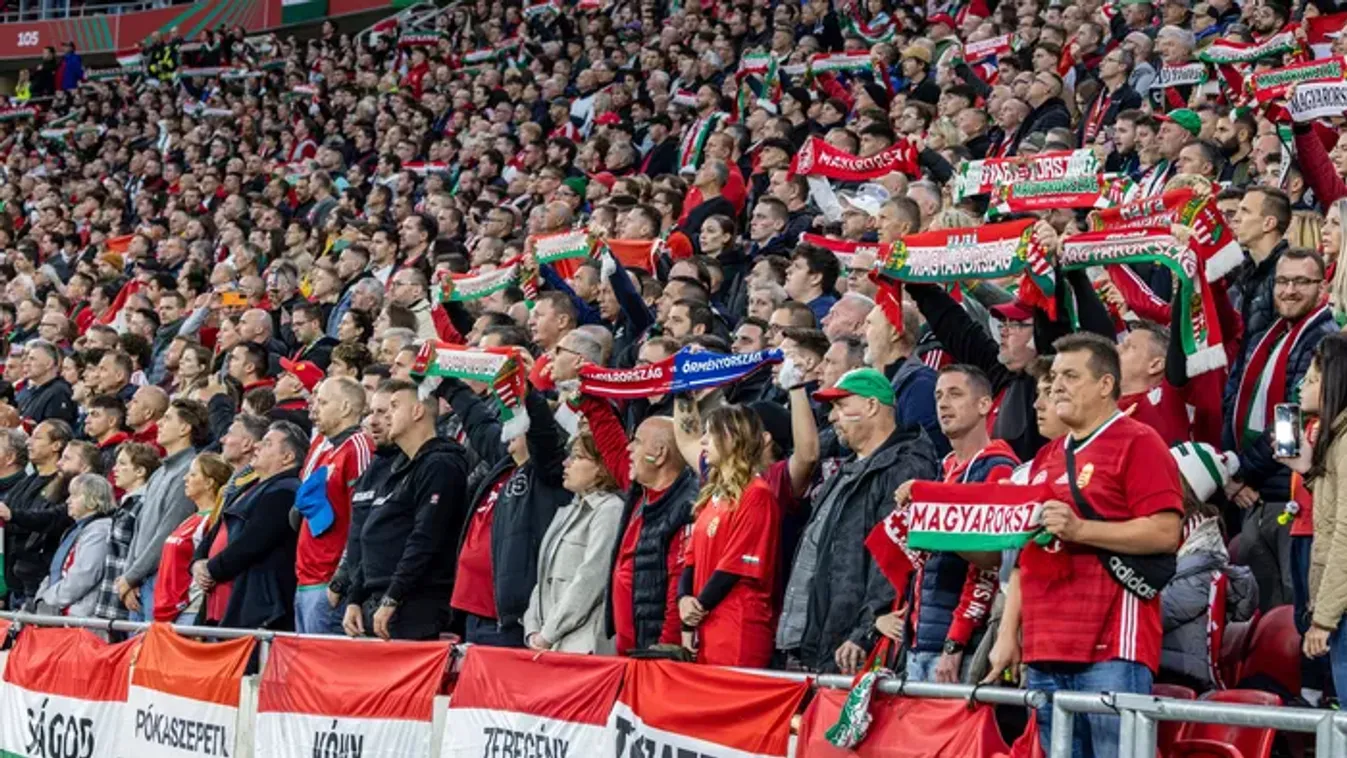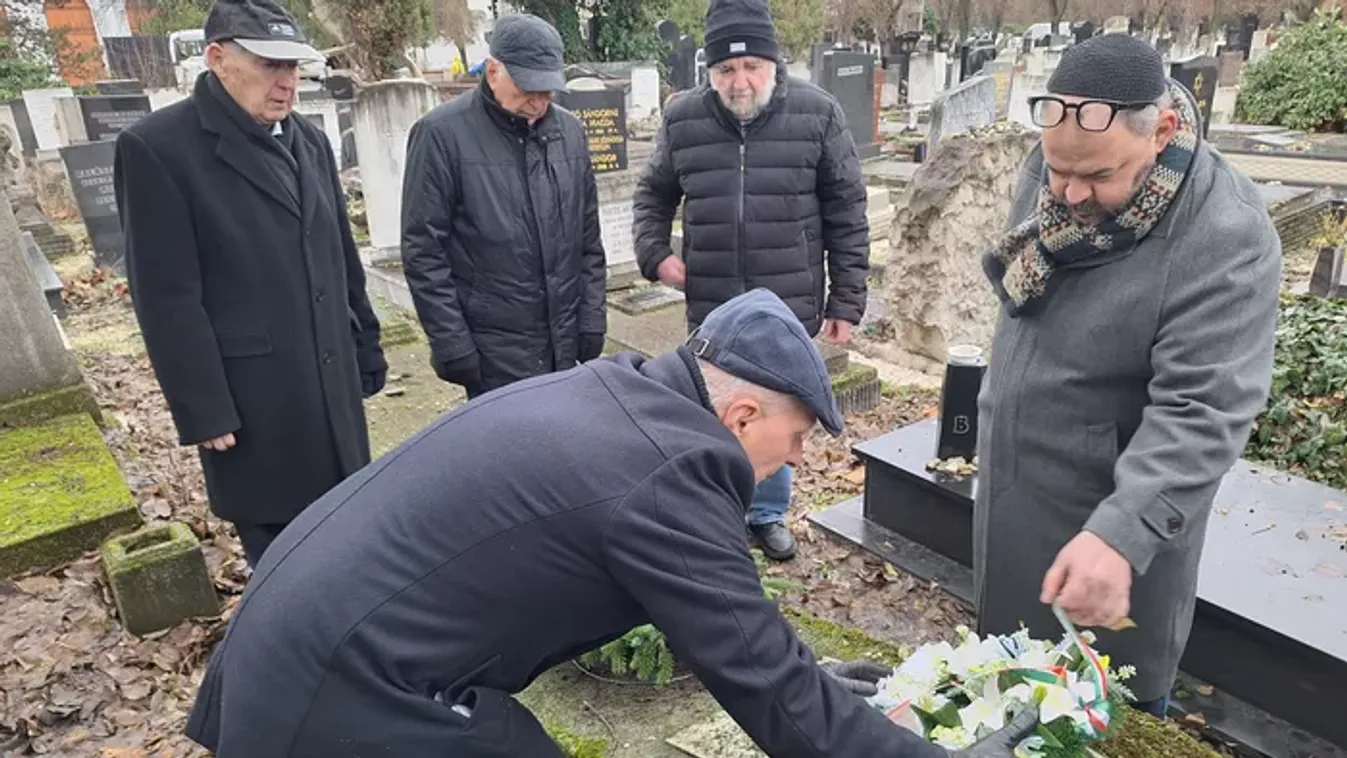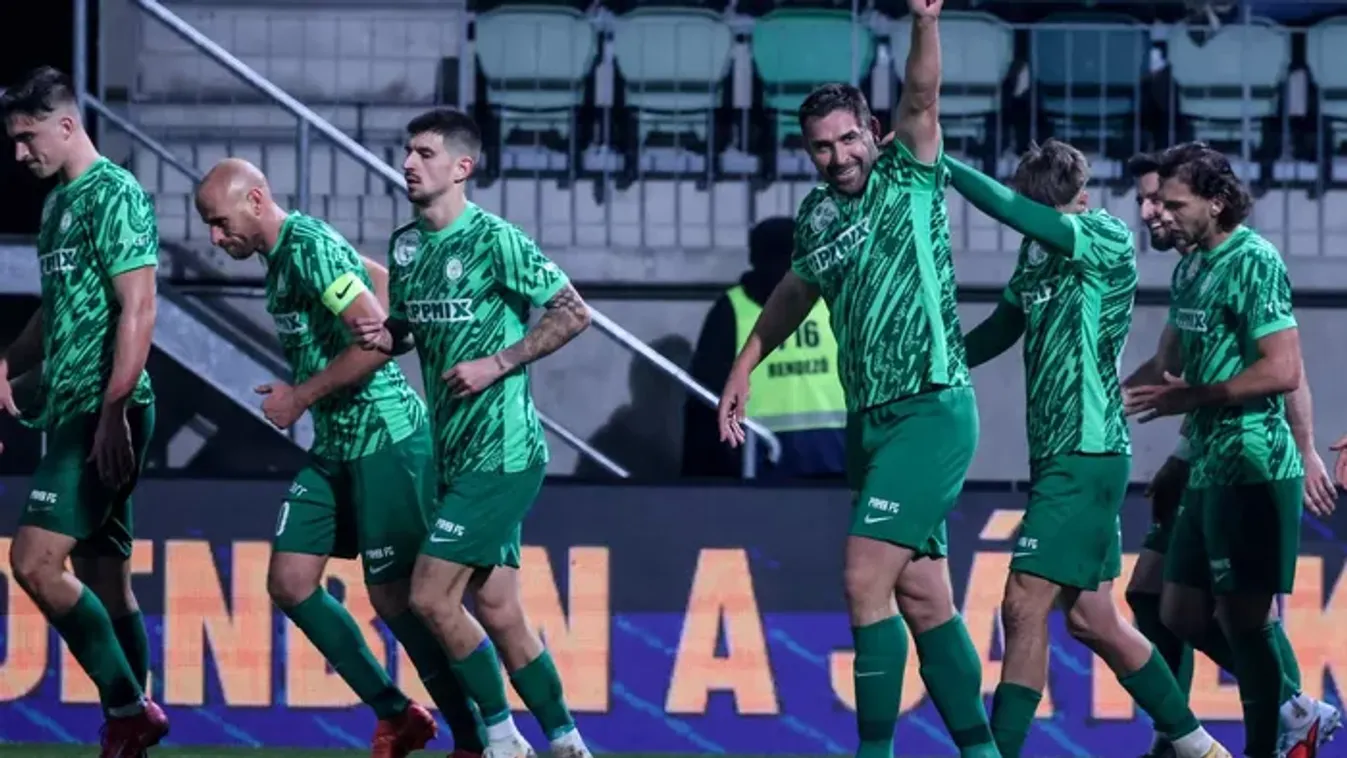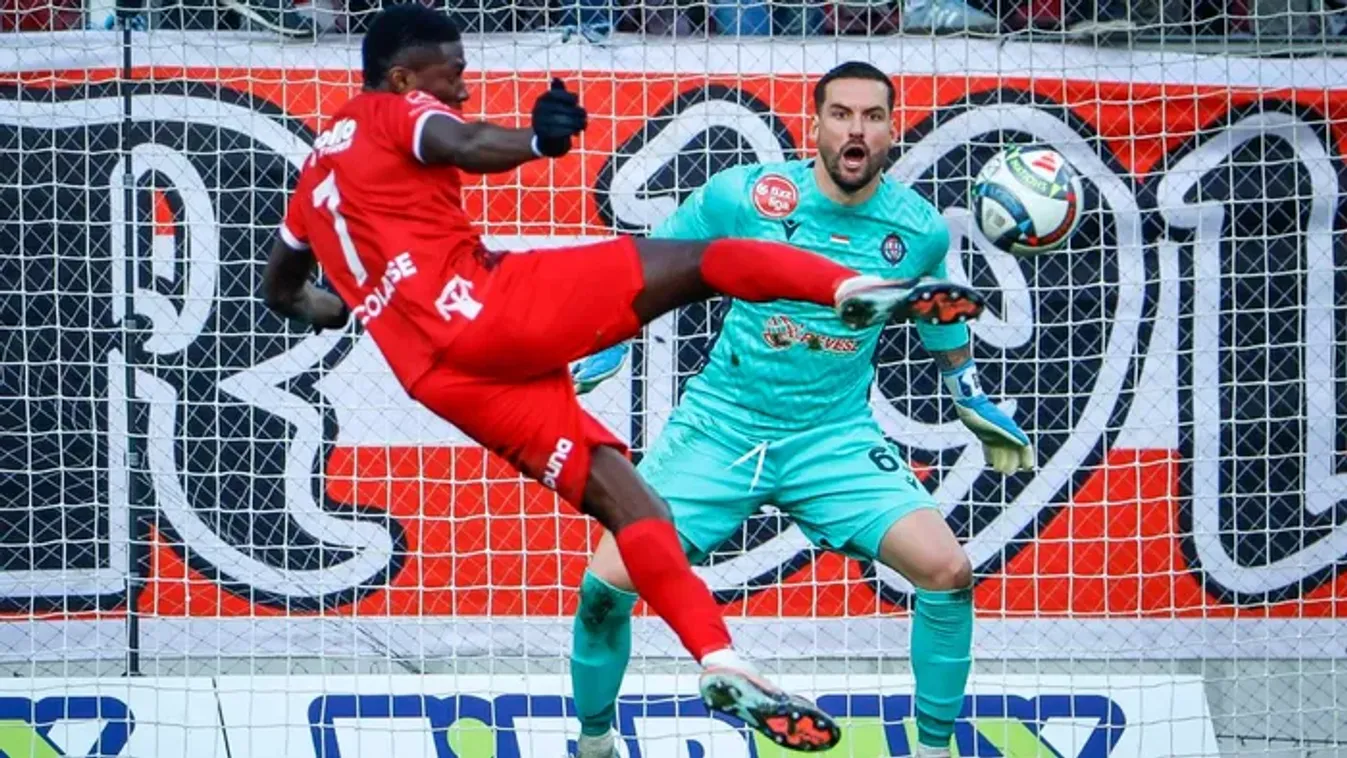"We played football as Jimmy Hogan taught us”
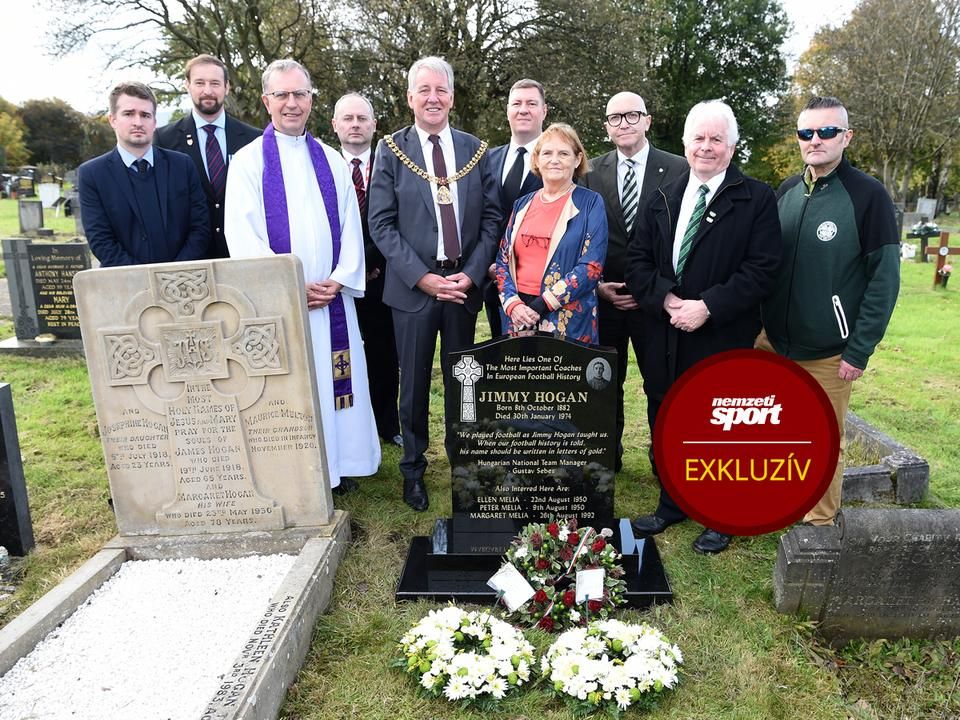 |
| Jimmy Hogan received a new headstone in Burnley. The lady in the middle is Hogan's granddaughter, Frankie (Photos: Clive Lawrence) |

The "prophet" of the fast, short-passing Scottish style arrived in Hungary in the spring of 1916. Although his three league wins with MTK are a testament to his success, they do not necessarily convey how important he is in the history of world football. His former Hungarian players, scattered around the world spread his creed and achieved success in several countries, but he also had a great influence on the Austrian wonder team of the 1930s (Wundermannschaft) and on Helmut Schön, who later won the World Cup with West Germany.
While in these countries he more or less receives the respect he deserves, his native country seemed to be less aware of his legacy, although it's fair to mention that one of the most renowned English writers, Jonathan Wilson, calls him the most influential British manager.
| "When I arrived in Budapest as a Reuters correspondent, Jimmy was referred to as a Scotsman at MTK. I didn't really care about him at that time, and it was also a lot harder to follow his story in the pre-Internet era. That's why it came as a surprise when I found out that, like me, he was from Nelson near Burnley and what an influential person he was in world football. The initiative of the organizers handing over the new headstone is extremely important. It also helps the locals to be aware of Hogan's significance and heritage, which should rightly fill them with pride." |
Hogan's ideas differed significantly from the English style, perhaps this "ideological" difference was the main reason why he was treated as eccentric by English football that was convinced of its own (footballing) superiority. Meanwhile, in the forming Central European countries, he found open-minded and talented students who were keen to learn his methods.
Jimmy Hogan was present at Wembley when Hungary beat England 6:3 in 1953 but it was the Hungarians who invited him. Gusztáv Sebes, who managed the Golden Team, reportedly said that: "We played football as Jimmy Hogan taught us.”
That devastating defeat forced the English to realize that football could be played differently (even nicer or better). So, it is no exaggeration to say that, albeit indirectly, Hogan had an impact on his country's football as well.
Yet Jimmy Hogan was resting in an unmarked grave in Burnley.
Until now.
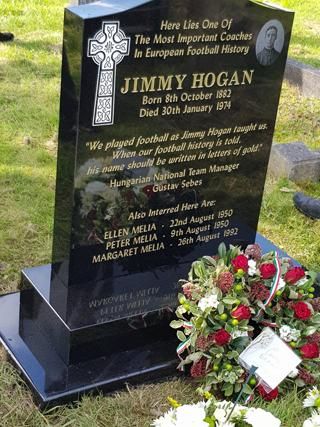
Chairman of Turf Moor Memorial Garden, Peter Briggs and his father, former mayor of Burnley, Charles, have decided to find the club's former player's final resting place. Of course, the task was not easy, since, as we learned at the scene, the manager, who died in 1974, was buried with three other relatives (some family dispute may have been behind the lack of a headstone) whose surnames were different. However, with the help of the city council, the Briggs family found the grave, (we were also able to ascertain that it was practically a piece of unmarked land between two graves), and then organized a fundraiser, that MTK and the Hungarian Sports Journalists' Association also joined. The Hungarian club also sent a thank-you note on the occasion of today's ceremony.
The ceremony took place on Hogan's birthday (b. 1882), Friday, October 8. It is important to emphasize this because there are still plenty of sources incorrectly displaying the coach's date of birth (as the 16th of October).
On Friday we gathered in a picturesque place surrounded by the Pennines. Representatives of Aston Villa, Bolton, Burnley, Celtic, and Fulham and, of course, some of Jimmy Hogan's family members were present. The event began with a speech by the Mayor of Burnley and continued with a Catholic ceremony since Hogan was a devout person, which he sometimes expressed somewhat oddly. At Celtic, he reportedly had a habit of saying prayers over the goalkeeper's gloves and occasionally blessing his players.
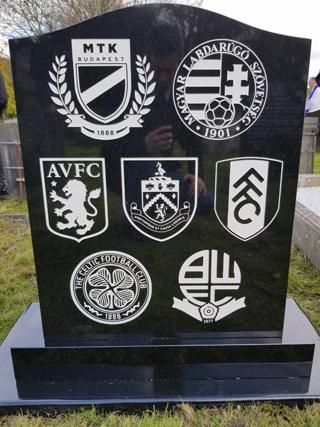
Then, our reporter conveyed the words of György Szöllősi, editor-in-chief of Nemzeti Sport, and President of the Hungarian Sports Journalists' Association:
„Like his most famous former player Béla Guttmann, so did almost every great coach who developed the tactics of the Golden Team, the Mighty Magyars, came from the MTK school, they were followers of the Hogan tradition. These coaches include the aforementioned head coach Gusztáv Sebes, as well as Márton Bukovi, who created the deep-lying center-forward position, or Gyula Mándi, a direct associate of Sebes... or even the then Secretary-General of MLSZ, Pál Titkos.”
Afterward, our colleague laid a wreath at the tomb with representatives of the Hungarian Consulate in Manchester. On the back of the headstone is the coat of arms of his former clubs, thus the MTK Budapest and the Hungarian Football Federation logos are also engraved there.
And the fact that the aforementioned quote of Sebes has been placed on the tombstone is a testament that the English know that the appreciation of the Golden Team's head coach is perhaps the most striking evidence of Jimmy Hogan's influence on world football.
From the cemetery, we headed to Burnley's stadium (Turf Moor), and in the memorial garden next to it, the former coach's memorial plaque with his name written in gold was unveiled.
As he deserves it.
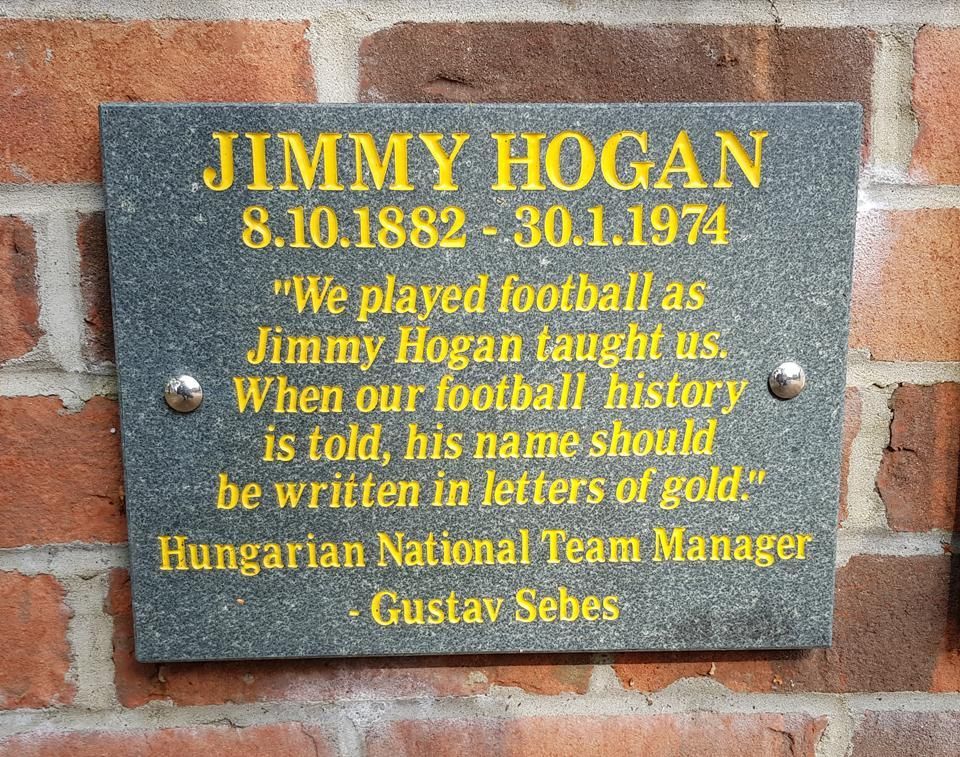
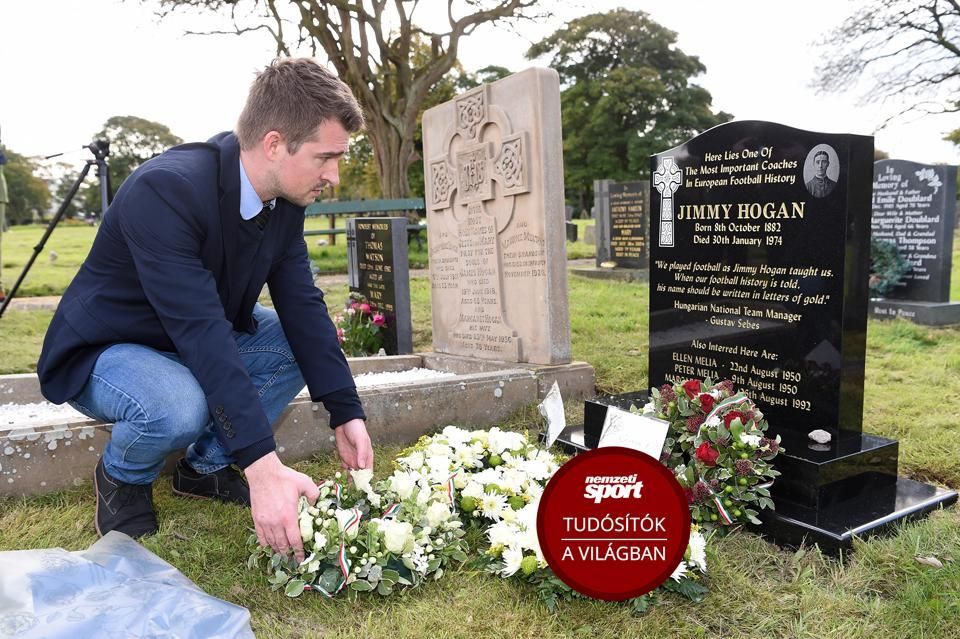
Translated by Vanda Orosz



